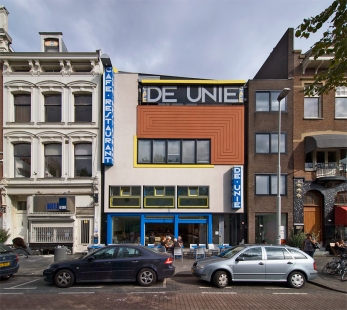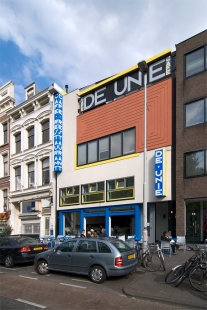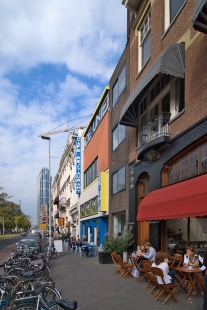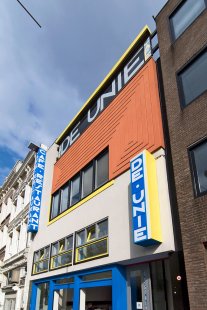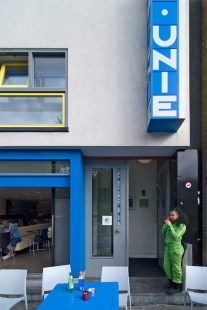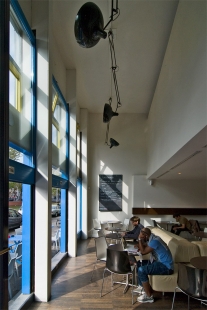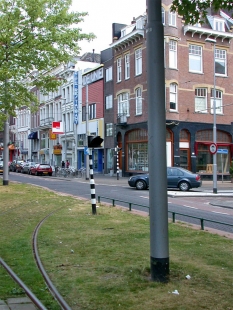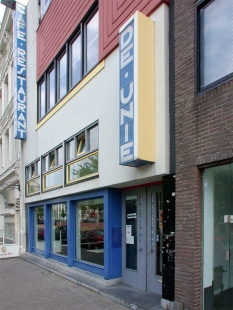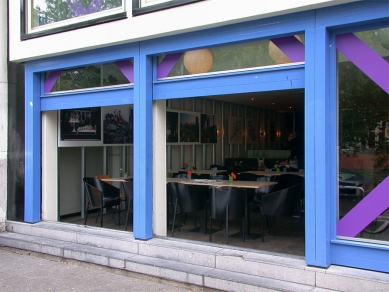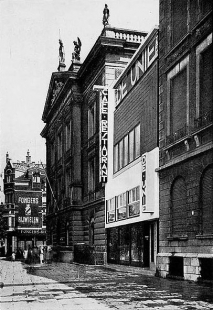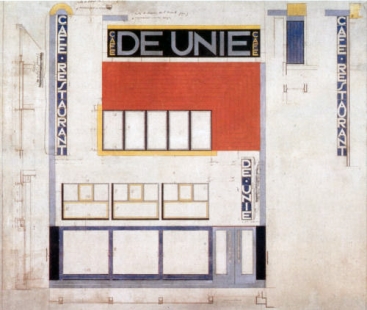
Café De Unie

- There is an old and a new consciousness of the era. The old leans towards the individual, the new leans towards the universal. The conflict between the individual and the universal is reflected today as much in world wars as in art.
- War destroys the old world along with everything it contains: the preferential position of the individual in all areas.
- The new art has revealed the essence of the new consciousness of the era: a balance between the universal and the individual.
- The new consciousness is ready to manifest itself in everything, including the everyday things of life.
- Tradition, dogmas, and the preferential position of the individual (natural) stand in the way of this manifestation.
- The founders of Neoplasticism therefore call upon all who believe in the reform of art and culture to destroy everything that disrupts further development as well as the new visual art, by shedding the constraints of natural forms, excluding everything that stands in the way of the expression of pure art, the extreme consequence of every concept of art.
From the De Stijl Manifesto, 1918
The original interior of Café de Unie by J.J.P. Oud from 1925 was destroyed at the beginning of World War II on May 14, 1940. The café had previously stood in the historical part of Coolsingel. In 1986, a replica was created based on the design of architect Carel Weeber on Maurtisweg, a Rotterdam area that was spared from the destructive Luftwaffe raids. The façade of the café, where primary colors (blue, red, and yellow) and simple mathematical calculations are used, creating a three-dimensional effect on a two-dimensional surface, serves as a perfect example of the Dutch artistic movement De Stijl aiming for their creations to reflect no elements of the surrounding world and thus stand alone as a balanced combination of lines, shapes, and colors. Alongside Rietveld's House for Mrs. Truus Schröder-Schrader in Utrecht (1924) and the interior of Caffé L'Aubette in Strasbourg (1928), it is the most poignant presentation of the ideals of this artistic movement in architecture. On the ground floor of Café de Unie, there is a bar with a restaurant, and at the back, there is a small theater hall.
The English translation is powered by AI tool. Switch to Czech to view the original text source.
0 comments
add comment


